10 curiosità sul cibo italiano
Italian cuisine is renowned worldwide for its delectable dishes and distinctive flavors. But beyond the well-known Italian delicacies, there are fascinating stories that remain largely unknown. So, let’s delve into 10 curious Italian food facts to satisfy your curiosity!
La cucina italiana è famosa in tutto il mondo per i suoi meravigliosi piatti e sapori unici. Nonostante molte specialità italiane siano conosciute in tutto il mondo, molte nascondono ancora storie affascinanti che pochi conoscono. Ecco quindi 10 curiosità sulla cucina italiana per soddisfare la tua curiosità!

Tiramisu, a mistress’s invention
Tiramisù, l’invenzione di una maitresse
Tiramisu, the world’s most renowned Italian dessert, was born in Treviso, a charming city less than an hour from Venice. It is said that in the 1800s, the owner of a local pleasure house created a special recipe to invigorate her clients after their… ahem… endeavors! She would serve it with a cheeky wink, saying, “desso ve tiro su mi” (“now I’ll lift you up”), giving rise to the dessert’s name – literally “pick me up.”
Il tiramisù, il dolce italiano più famoso al mondo, è nato a Treviso, una bella città a meno di un’ora da Venezia. Si narra che nel XIX secolo, la proprietaria di una casa di piacere della città creò una ricetta speciale per dare energia ai clienti dopo i loro… ehm… sforzi! Lo serviva con sguardo birichino, dicendo: “desso ve tiro su mi”, da cui ha poi tratto origine il nome del dolce.
Another more conventional version attributes the origin of tiramisù to the pastry chef Roberto Loli Linguanotto, who supposedly crafted the first tiramisù at the famous restaurant “Alle Beccherie” in the 1970s. Yet, personally, I find the spicier version more intriguing. After all, the combination of ingredients – from eggs to coffee – undoubtedly provides a burst of energy!
Un’altra versione, più tradizionale, attribuisce l’origine del tiramisù al pasticcere Roberto Loli Linguanotto, che avrebbe creato il primo tiramisù al famoso ristorante “Alle Beccherie” negli anni ’70. Non so voi, ma a me piace pensare che la versione più “piccante” sia quella vera. Dopotutto, gli ingredienti – dalle uova al caffè – danno senza dubbio un sacco di energia!

The Parmigiano Reggiano Bank
La banca del Parmigiano Reggiano
Here’s one of the most fascinating Italian food facts. Parmigiano Reggiano, the undisputed superstar among Italian cheeses, stands as a genuine icon of our cuisine. But did you know that in Reggio Emilia, the heart of the Parmigiano production area, the Credem bank has been offering an aging service for this cheese for over 70 years? This service caters to producers who lack sufficient space to age their own cheese. What’s even more fascinating is that the bank accepts forms of Parmigiano Reggiano as collateral for loans to these producers!
Ecco una delle curiosità più affascinanti sul cibo italiano. Il Parmigiano Reggiano, indiscussa superstar dei formaggi italiani, è una vera e propria icona della nostra cucina. Ma sapevi che a Reggio Emilia, nel cuore dell’area di produzione del Parmigiano, la banca Credem offre da oltre 70 anni un servizio di stagionatura di questo formaggio per produttori che non hanno sufficiente spazio a disposizione? Non solo questo, ma accettano persino forme di Parmigiano Reggiano come garanzia per i prestiti ai produttori!
Inside the bank’s deposit rest an astounding 500,000 Parmigiano Reggiano wheels, worth over 200 million euros. To safeguard this treasure, Credem employs cutting-edge security measures, including infrared cameras, climate-controlled safes equipped with alarms, and even earthquake-defying gadgets. Amazing, right?
All’interno del deposito della banca riposano ben 500.000 forme di Parmigiano Reggiano per un valore complessivo di oltre 200 milioni di euro. Per preservare questo tesoro, Credem utilizza misure di sicurezza all’avanguardia, tra cui telecamere ad infrarossi, casseforti climatizzate dotate di allarmi e persino dispositivi anti-terremoto. Impressionante, vero?
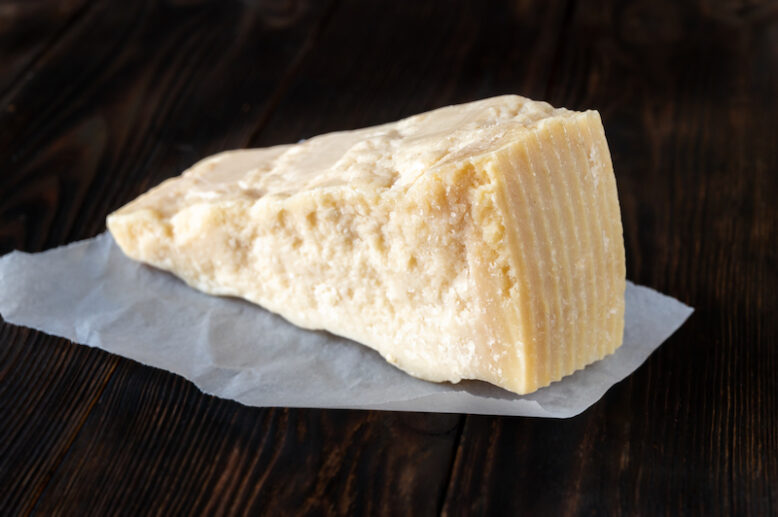
Taxes shaped Tuscany’s unique saltless bread
Il pane toscano è senza sale per via delle tasse
Bread holds a special place in Italian cuisine, boasting a rich variety of shapes and flavors. In Tuscany, however, it stands out with a unique characteristic – it’s missing a crucial ingredient: salt! Yes, Tuscan bread is proudly salt-free, and believe it or not, that’s what makes it surprisingly delicious!
Il pane occupa un posto speciale nella cucina italiana, con tante varietà di forma e impasto. Ma in Toscana si distingue per una caratteristica unica: manca infatti un ingrediente cruciale, ovvero il sale! Sì, il pane toscano è orgogliosamente privo di sale ed è proprio questo che lo rende sorprendentemente delizioso!
Its origin has to do with the epic rivalry between the Florentines and the Pisans back in the 12th century. Pisa, a powerful maritime republic, decided to impose a hefty fee on the Florentines for their precious salt supply. In a bold act of rebellion, the Florentines simply responded with a resounding “No, grazie!” and started baking their bread without salt.
Il pane occupa un posto speciale nella cucina italiana, con tante varietà di forma e impasto. Ma in Toscana si distingue per una caratteristica unica: manca infatti un ingrediente cruciale, ovvero il sale! Sì, il pane toscano è orgogliosamente privo di sale ed è proprio questo che lo rende sorprendentemente delizioso!
The popularity of this saltless bread quickly spread throughout the region, perfectly complementing the flavours of Tuscan dishes and filling the Florentines with pride. Its fame grew to such an extent that even Dante Alighieri made a reference to it in his Divine Comedy. Writing about the future exile that awaited him, he mentioned salty bread as a a symbol of the challenging life away from his homeland: ‘You will experience how salty the taste of others’ bread is.'”
La popolarità di questo pane senza sale si diffuse rapidamente in tutta la regione, diventando il perfetto accompagnamento per i piatti toscani tradizionalmente molto saporiti e riempiendo di orgoglio i fiorentini stessi. La sua fama crebbe al punto che persino Dante Alighieri ne parlò nella Divina Commedia. Scrivendo del futuro esilio che lo attendeva, lo citò infatti come simbolo della dura vita lontano dalla sua patria: “Tu proverai sì come sa di sale il pane altrui.”
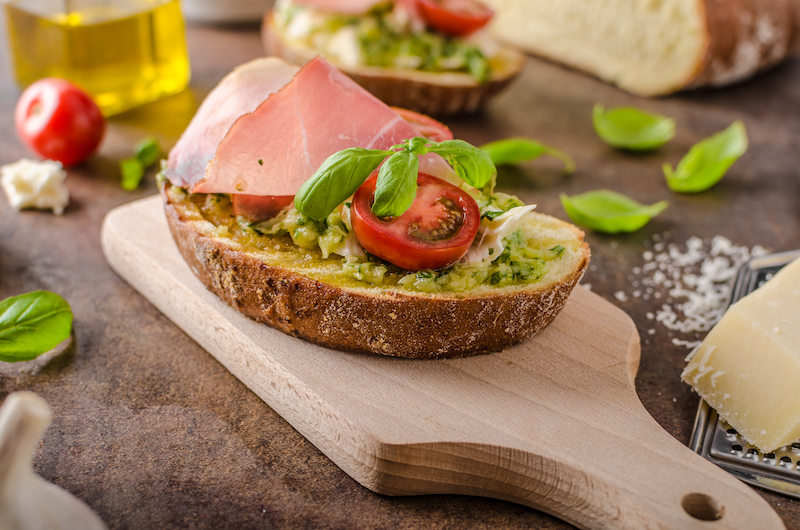
Italy’s pasta passion
La passione degli italiani per la pasta
The fact that Italians have a profound love for pasta comes as no surprise, considering the impressive numbers behind it. On average, each person consumes a whopping 23 kg (around 51 lbs!) of pasta annually, a testament to our unwavering passion for this delightful dish. On top of that, we take great pride in celebrating pasta on a grand scale every year with World Pasta Day, a delightful occasion that falls on October 25th.
Il fatto che gli italiani abbiano una profonda passione per la pasta è cosa nota, ma questa passione può anche essere quantificata. È stato infatti stimato che in media ogni persona consuma ben 23 kg di pasta all’anno! E ne siamo così orgogliosi che abbiamo istituito persino la Giornata Mondiale della Pasta, per celebrarla ogni 25 ottobre contanti eventi.
But for Italians, pasta is more than just a simple dish; it’s an integral part of our culture and tradition. From north to south, every region and even each family takes pride in their own pasta specialty. And with over 350 types of pasta available – whether it be dry, fresh, long, short, filled, smooth, rough, and so on – there is always something new to savor!
Ma per noi italiani, la pasta è più di un semplice piatto; è parte della nostra cultura e tradizione. Da nord a sud, in ogni regione e persino ogni famiglia custodisce una sua specialità di pasta. E con oltre 350 tipi di pasta a disposizione – secca, fresca, lunga, corta, ripiena, liscia, ruvida e così via – c’è sempre qualcosa di nuovo da provare!

Turin is the cradle of aperitivo culture
L’origine dell’aperitivo: una storia torinese
Aperitivo is a cherished tradition in Italy, where people indulge in drinks accompanied by small snacks before dinner. This delightful custom has its origins in Turin, the splendid capital of Piedmont. To be more precise, it dates back to the 5th century B.C. when the Greek physician Hippocrates prescribed a beverage called “aperitivus” (literally “that which opens”) to patients who had a lack of appetite. The term’s etymology is evident: the aperitivo stimulates the appetite!
L’aperitivo è una tradizione molto amata in Italia, dove si gustano drink con piccoli stuzzichini prima di cena. Questa usanza ha avuto origine a Torino, la splendida capitale del Piemonte. Per essere precisi, questo delizioso rituale affonda le sue radici nel V secolo a.C., quando il medico greco Ippocrate prescriveva una bevanda chiamata “aperitivus” (letteralmente “ciò che apre”) ai pazienti con mancanza di appetito. L’etimologia del termine è chiara: l’aperitivo stimola l’appetito!
Centuries later, in the late 18th century, Antonio Benedetto Carpano crafted Vermouth, a wine infused with quinine, at his liquor shop in Turin. The drink achieved tremendous success and even captured the hearts of the Savoy family, who declared it the official court aperitif. Over time, this drink began to be served alongside small snacks and well… the rest is history!
Alcuni secoli dopo, sul finire del XVIII secolo, Antonio Benedetto Carpano creò il Vermouth, un vino aromatizzato con china, nel suo negozio di liquori a Torino. La bevanda ottenne un enorme successo e conquistò persino i Savoia, che lo dichiararono aperitivo ufficiale di corte. Nel corso del tempo, questa bevanda iniziò ad essere servita insieme a piccoli snack e… beh, il resto è storia!
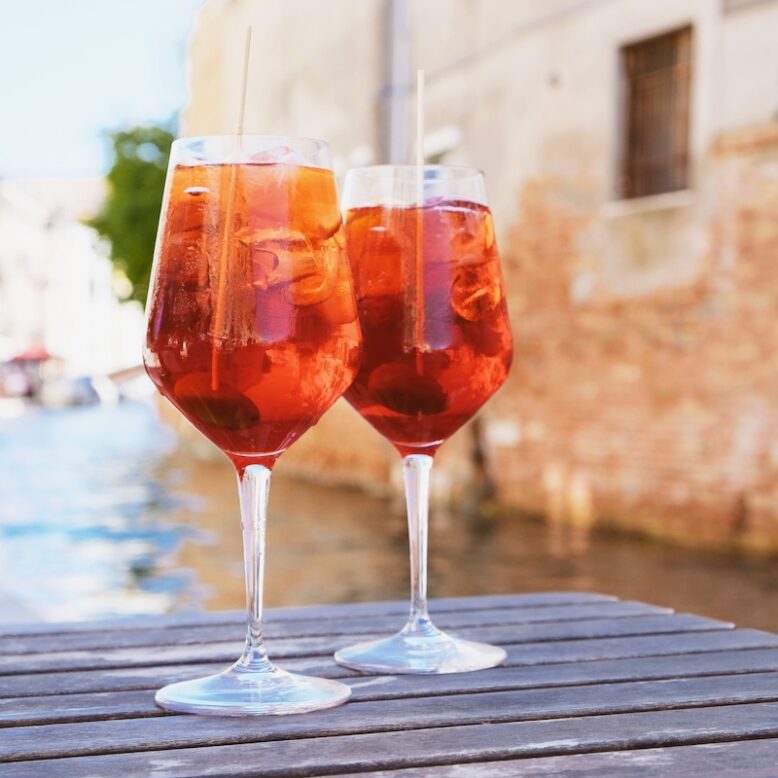
Gelato was born in Florence
Il gelato è nato a Firenze
Florence is the cradle of many masterpieces, including a sweet marvel: gelato! It was 1559, and the Medici were throwing yet another opulent party. However, this time Duke Cosimo challenged the family’s esteemed architect Buontalenti, to create something extraordinary that would go down in history. And the artist didn’t disappoint.
Firenze è la città in cui sono nati molti capolavori, tra cui anche una meravigliosa delizia: il gelato! Era il 1559 e i Medici stavano organizzando una delle loro celebri feste. Ma questa volta il Duca Cosimo decise di mettere alla prova l’architetto di famiglia, Buontalenti, sfidandolo a creare qualcosa di eccezionale che sarebbe passato alla storia. E l’artista non deluse le sue aspettative.
Buontalenti came up with an extraordinary concoction made of milk, honey, egg yolk, wine, and delightful citrus flavorings. He even designed a machine to serve it as a refreshing cold cream, thereby pioneering the world’s first gelato machine!
Buontalenti inventò uno straordinario dessert a base di latte, miele, tuorlo d’uovo, vino e aromi agrumati, e ideò persino una macchina per poterlo servire come crema fredda, segnando così la nascita della prima macchina per il gelato al mondo!
Then when Caterina de’ Medici left Florence to marry the future King of France, she took with her Buontalenti’s sensational gelato recipe. The result? Gelato fever swept across France and then across all of Europe. Today, you can still indulge in Buontalenti’s masterpiece at gelateria Badiani in Florence, which continues to serve this iconic gelato flavor – surely, one of those curious Italian food facts to jot down!
Quando poi Caterina de’ Medici lasciò Firenze per sposare il futuro re di Francia, portò con sé la sensazionale ricetta di Buontalenti e il gelato si si diffuse ben presto in tutta la Francia e da lì in tutta Europa! Oggi, puoi ancora assaggiare il capolavoro di Buontalenti presso la gelateria Badiani a Firenze, che continua a servire questo iconico gusto di gelato – una di quelle curiosità sul cibo italiano da appuntare subito!

Italy’s first coffee shop
Il primo caffè in Italia
Italy’s passion for coffee (the second most consumed beverage after water!) is evident in every corner of the country, with over 150,000 coffee bars spread throughout the territory where countless espressos are ordered daily. Interestingly, it was Venice that introduced the concept of the coffee house to Europe. During its time as a naval powerhouse, Venice imported exotic marvels from far-off lands, among them the enigmatic black beverage known as coffee.
L’amore dell’Italia per il caffè (la seconda bevanda più consumata dopo l’acqua!) è evidente in ogni angolo del paese, con oltre 150.000 bar sparsi in tutto il territorio dove innumerevoli espressi vengono ordinati ogni giorno. Curiosamente, fu Venezia a introdurre il concetto di caffetteria in Europa. Ai tempi in cui era una potenza navale, Venezia importava meraviglie esotiche da terre lontane, tra cui la misteriosa bevanda nera conosciuta come caffè.
In the 16th century, the Venetian ambassador to Constantinople, Gianfrancesco Morosini, was the first to mention this intriguing new beverage in his reports. Then, a few years later, Prospero Alpini, a physician and botanist serving the Venetian consul in Egypt, brought the first coffee beans to Europe. The Venetians swiftly developed a strong affinity for coffee, leading to the opening of Europe’s first coffee house, the Florian, in St Mark’s Square in 1720. This establishment achieved tremendous success, playing a crucial role in popularizing the coffee culture and the concept of bars as hubs for social gatherings and conversations.
Nel XVI secolo, l’ambasciatore di Venezia a Costantinopoli, Gianfrancesco Morosini, fu il primo a parlare di questa nuova bevanda nelle sue relazioni. Alcuni anni dopo, Prospero Alpini, un medico e botanico al servizio del console veneziano in Egitto, portò i primi chicchi di caffè in Europa. I veneziani svilupparono rapidamente una forte predilezione per il caffè, tanto che nel 1720 venne aperta la prima caffetteria d’Europa, il Florian, in Piazza San Marco. Il locale ottenne un enorme successo, diffondendo il culto del caffè e l’idea di bar come luogo di incontro e conversazione.
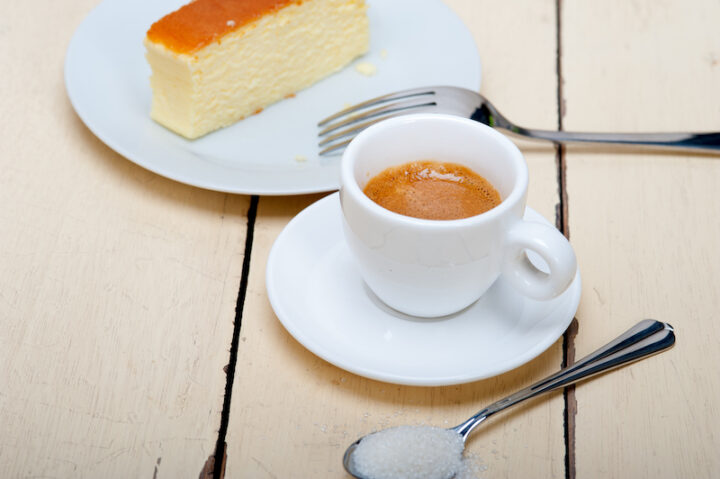
Turin’s tramezzino sandwich
I tramezzini di Torino
Ah, the tramezzino! Two slices of soft bread, with their iconic triangular shape and rigorously crustless, embracing delightful fillings – a true delight! This Italian rendition of the English sandwich, originally invented by Count John Montagu in 1760, has a captivating history that leads us once again to Turin. In 1926, after her time in America, Mrs. Angela Demichelis returned to her hometown and, together with her husband, founded Caffè Mulassano. This establishment quickly became a cherished landmark in Turin, and the couple introduced several innovations, including an all-Italian version of the sandwich they had encountered in America.
Ah, il tramezzino! Due fette di pane morbido, dall’iconica forma triangolare e rigorosamente senza crosta, che abbracciano deliziose farciture – una vera delizia! Questa versione italiana del sandwich inglese – inventato dal conte John Montagu nel 1760 – ha una storia affascinante che ci porta di nuovo a Torino. Nel 1926, la signora Angela Demichelis, dopo essere stata in America, tornò nella sua città e con suo marito aprì il Caffè Mulassano. Questo locale divenne un punto di riferimento a Torino e la coppia introdusse tante innovazioni, tra cui una versione tutta italiana del sandwich che avevano scoperto in America.
It is said that the first tramezzini were filled with butter and anchovies – a delicious combination that’s still on their menu. And if you’re curious about the origin of the term “tramezzino,” credit for that goes to Gabriele D’Annunzio!
Si dice che i primi tramezzini fossero farciti con burro e acciughe – una golosa farcitura che è ancora presente nel loro menu. E se ti stai chiedendo come si è arrivati al termine “tramezzino”, beh, quello è merito di Gabriele D’Annunzio!

Ragù alla bolognese, the patented sauce
Ragù alla bolognese, il sugo con il brevetto
Synonymous with Sunday lunches and family celebrations, Bolognese ragù is one of those cherished recipes that are lovingly passed down through generations, as nothing quite compares to the ragù prepared by a mother’s hands!
Sinonimo di pranzi domenicali e feste in famiglia, il ragù alla bolognese è una di quelle ricette che vengono gelosamente tramandate in famiglia, poiché non c’è niente di meglio del ragù preparato dalla mamma!
The origins of this delectable sauce can be traced back to medieval France, where it initially existed as a meat stew known as “ragoût.” Then, it journeyed to Italy thanks to the Bourbon rulers of Naples and the Pope, who brought the recipe to Rome after departing from Avignon.
La storia di questo delizioso sugo è affascinante. Affonda le sue radici nella Francia medievale dove inizialmente era uno stufato di carne chiamato “ragoût”. Arrivò poi in Italia grazie ai Borboni di Napoli e al Papa, che portò la ricetta a Roma quando lasciò Avignone.
Upon arriving in Italy, this culinary delight transformed into a rich sauce, and the earliest references to Ragù alla Bolognese can be found in the esteemed book “Science in the Kitchen and the Art of Eating Well” by Pellegrino Artusi, dating back to the 19th century. Over time, the Bolognese variation of the sauce acquired distinctive characteristics, incorporating pork pancetta and minced beef, setting it apart from the Neapolitan variant that uses whole pieces of meat.
Una volta giunto in Italia, questo piatto si è trasformato in una salsa, e le prime menzioni del ragù alla bolognese risalgono al XIX secolo, trovate nel celebre libro di Pellegrino Artusi “La scienza in cucina e l’arte di mangiar bene”. Nel corso del tempo, la versione bolognese ha sviluppato caratteristiche distintive, utilizzando pancetta di maiale e carne macinata di manzo, a differenza della variante napoletana che prevede l’uso di pezzi interi di carne.
The people of Bologna hold their ragù in high regard, to the extent that in 1982, a delegation from the Italian Academy of Cuisine officially deposited the authentic Bolognese ragù recipe with the local Chamber of Commerce!
I Bolognesi sono molto orgogliosi del loro ragù, tanto che nel 1982 una delegazione dell’Accademia Italiana della Cucina depositò la ricetta ufficiale del ragù alla bolognese presso la Camera di Commercio della città!
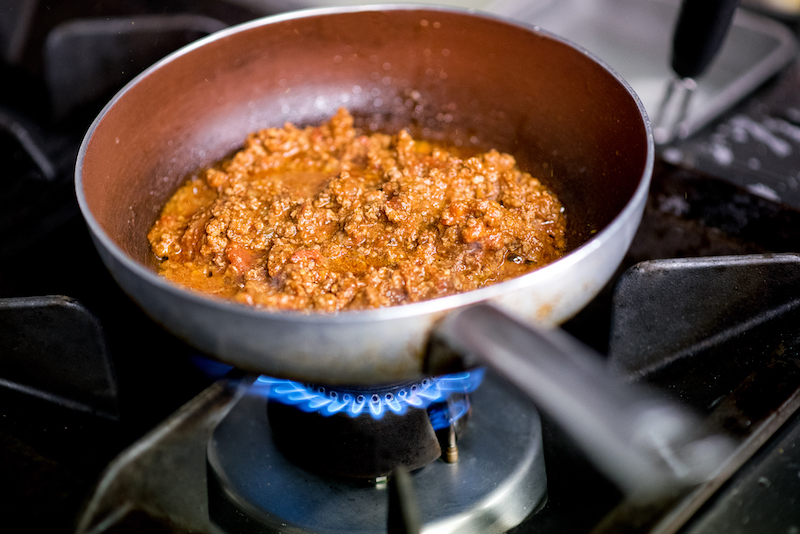
An error gave birth to the Panettone
Un errore ha dato vita al Panettone
Soft, buttery, and with its unmistakable golden dough, Panettone stands as a true gem among Italian sweets. It is one of those foods that are eaten on special occasions in Italy, in this case Christmas.
Soffice, burroso e con la sua inconfondibile pasta gialla, il Panettone è una vera star tra i dolci italiani. È uno di quei cibi che si mangiano in Italia nelle occasioni speciali, in questo caso a Natale.
The story of Panettone takes us back to Christmas Eve in 1495, at the kitchen of the Sforza court in Milan. During the of preparations, the chef sought the help of a young boy named Toni to keep an eye on the sweet baking in the oven. But Toni couldn’t resist the urge to take a quick nap, which resulted in the dessert getting burnt. However, instead of despairing, he took the remaining dough he had set aside for himself and added candied fruits and juicy raisins, transforming it into a brand new creation.
La storia del Panettone ci porta indietro alla Vigilia di Natale del 1495, nella cucina della corte degli Sforza a Milano. Durante i preparativi, lo chef chiese l’aiuto di un giovane ragazzo di nome Toni per controllare il dolce che stava cuocendo nel forno. Toni non riuscì a resistere alla tentazione di fare una breve dormita, e il dolce si bruciò. Ma anziché disperarsi, trovò subito una soluzione: prese il resto dell’impasto che aveva messo da parte per sé e aggiunse frutta candita e uva passa.
Upon sampling it, Ludovico il Moro was so enchanted by its taste that he promptly christened it “pan del Toni” in tribute to its young inventor. As time passed, this delightful creation spread across Italy, evolving into the beloved “Panettone” we know and cherish today.
Quando Ludovico il Moro assaggiò il dolce, ne rimase estasiato tanto da ribattezzarlo subito “pan del Toni” in onore del suo giovane creatore. Col passare del tempo, questo delizioso si diffuse in tutta Italia e il suo nome si trasformò gradualmente nel nostro amato “panettone”.
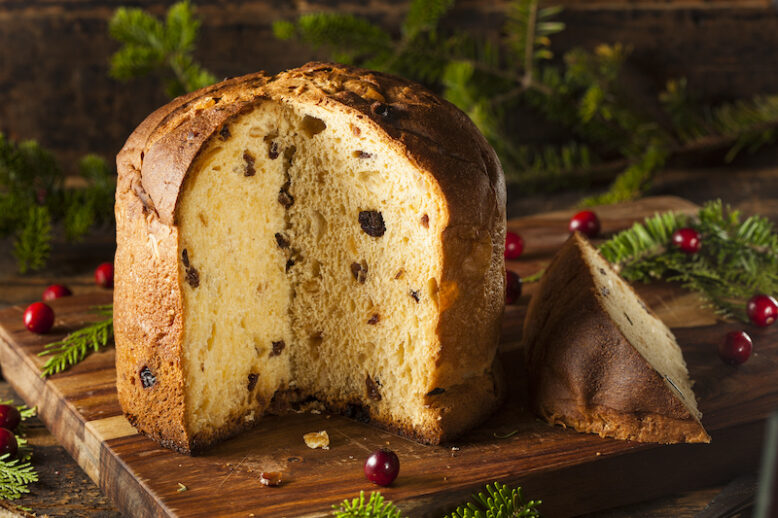
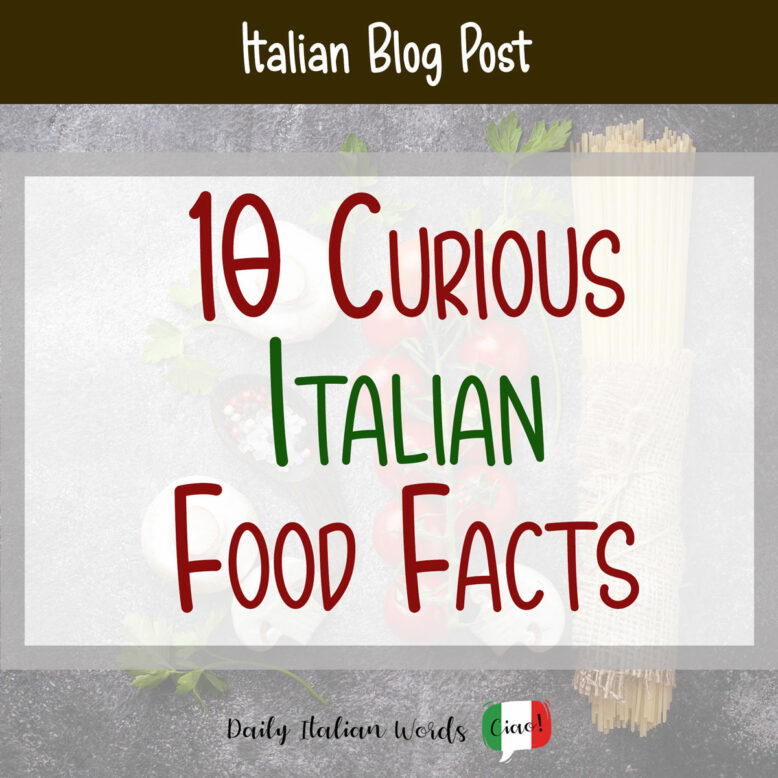
Valentina is a travel writer in love with her country. Having travelled widely around the globe, she realised there was more to explore closer to home and decided to put the passport aside for a while. You can follow her adventures around Italy on her blog myitaliandiaries.com

Valentina Nicastro is a travel writer in love with her home country, Italy. Having travelled widely around the globe, she realised there was more to explore closer to home and decided to put the passport aside for a while. When she is not immersed in documenting Italy, you’ll find her donning her communication consultant hat, weaving words as a content writer and bridging linguistic divides as a translator.


